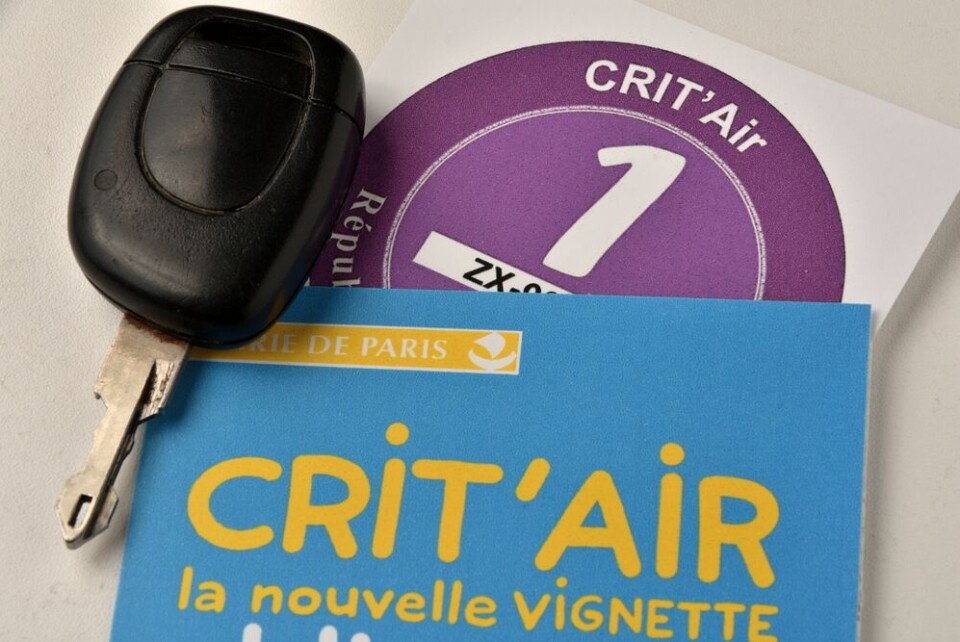-
French ski resorts report excellent Christmas despite less snow than last year
Bookings are up and non-snow related activities are also on the rise
-
Is French ‘malus’ tax being applied to second-hand cars?
Change was included in 2025 budget law
-
American celebrity jeweller robbed of ‘more than €1m’ at French Riviera Airbnb
Jewellery and cash stolen from rental property where Chris Aire was staying
Which French towns are delaying obligatory air pollution stickers?
More and more cities are pushing back on tightening restrictions but others are delaying bringing them in all together

A number of French cities where Crit’Air pollution stickers are already mandatory have altered the rollout of further restrictions on high-emission cars. Some have pushed back on bringing in restrictions altogether.
Whilst 43 towns and cities are in line to implement a zones à faibles émissions (ZFE or low-emission zone) by 2025, the cities where they are already in place have a number of different regulations for vehicles within their borders.
For example, you need a Crit’Air sticker to drive through both Nice or central Paris and several neighbouring suburbs but the rules on which cars are restricted from entering the respective ZFEs are different.
In July, the majority of cities with a ZFE in place were given the greenlight to alter the rollout of more restrictive measurements, largely keeping current rules in place for the foreseeable future.
Lyon is the latest area to announce changes to further restrictions and other major cities have pushed back the implementation of a ZFE within city borders, threatening to delay the rollout of the zones beyond the scheduled 2025 government deadline.
Below, we recap the latest changes.
Reminder: what is a Crit’Air sticker?
As a reminder, all vehicles driving through a ZFE will need a Crit’Air sticker displayed on their windshield (or on the body of a motorcycle). This includes drivers of vehicles from abroad, who will need to order a sticker before driving in France.
The vignette has a number corresponding to the level of pollution a vehicle emits, ranging from 0 (fully electric) to 5 (pre-1997 diesel and petrol cars and the most polluting vehicles).
You can order the sticker for your vehicle – both as a resident and visitor to France – using the official website.
Read also: A guide to Crit’Air stickers in France
Read also: France Crit’Air zones: biker anger and where do rules limit drivers?
Major cities delay implementation of zones
Bordeaux is currently the largest French city without a ZFE in place and the mairie recently announced that the original implementation date of the zone – the beginning of 2024 – had been pushed back to “at least 2025.”
In Toulon, a ZFE was scheduled to come into effect in January 2023 but was delayed to June before being postponed indefinitely (although, as with all other zones, it is scheduled to be in place by 2025).
It is unclear whether the commitment for all ZFEs to be in place by 2025 will be realised as municipal authorities and drivers have responded to the zones with backlash.
Read more: Is this the beginning of the end for France’s low-emission zones?
For now, the government is still seemingly committed to implementing the zones although cities may have some leeway over how strictly the rules are enforced.
Some ZFEs that are already in place have seen ‘information grace periods’ during the first six months of implementation, where those without a sticker or a vehicle nominally banned have been informed of rule changes instead of being punished.
You can see an overview of what cities already have a ZFE in place on the government site, although this does not take into account trial zones for upcoming ZFEs or give an overview of the exact rules in each city.
To find the regulations pertaining to an exact area where a ZFE is already in place, you should look on the local prefecture’s website for information.
Which cities with a ZFE have announced changes?
Lyon – one of the five cities scheduled to keep to the original timetable, which would ban Crit’Air level 3 cars by 2025 – recently announced they would not ban diesel cars before 2028 within the zone.
Originally, the city should have banned them no later than 2026 and most diesel cars fall into the Crit'Air 3 category (newer models produced after 2010 are usually classed as Crit’Air 2).
Reims, which was also set to follow the original rules, will now not ban Crit’Air 3 cars until 2029, five years after originally intended.
Paris is pushing back on further restrictions until after the 2024 Olympic Games, although it is set to ban Crit’Air 3 cars and lower from January 2025.
Read also
This road sign is popping up more and more in France
How do you register a used car in France?
French first as city brings in parking charges linked to car’s weight
























